𝐂𝐨𝐦𝐩𝐚𝐫𝐢𝐧𝐠 𝐭𝐡𝐞 𝐒𝐜𝐫𝐢𝐛𝐞𝐬 𝐨𝐟 𝐭𝐡𝐞 𝐐𝐮𝐫’𝐚𝐧 𝐚𝐧𝐝 𝐁𝐢𝐛𝐥𝐞
Mohamad Mostafa Nassar
Twitter:@NassarMohamadMR
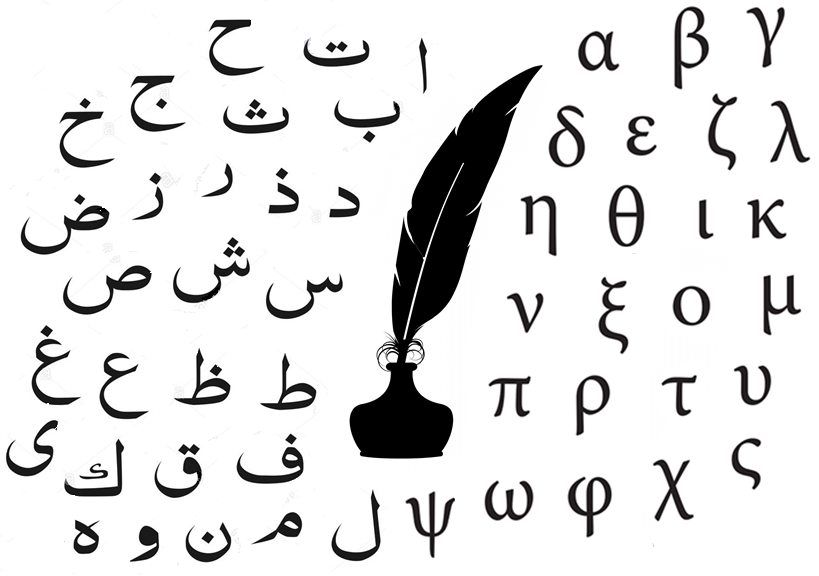
The scribal circumstances of the Bible and Qur’an could not have been any more different. For much of Arab history, the most honourable form of expression was the spoken, and not written, word. Arabic literature, in the written form, does not begin until the sixth century, that is, the century just before the emergence of Islam.
Prior to the revelation of the Qur’an, the Arabs wrote some poetry down, such as the renowned Mu’allaqat, the “Hanged Poems”, which used to be hung on the door of the Ka’aba.
But until the compilation of the Qur’an the Arabs had not published a book for public distribution [1]. Contrast the situation in Arabia with that of the Christian world. Lands such as Greece and Rome had literary institutions in place centuries prior to the composition of the New Testament.
The Hellenistic period saw the spread of books, literary cataloguing and criticism, as well as the creation of vast libraries that housed tens of thousands of volumes.
The early Muslims were also disadvantaged from a literacy perspective. It is estimated that the literacy rates of the Greco Roman world averaged from 5 percent to 10 percent, to no more than 20 percent with regional variations [2].
While this figure may seem low, contrast it with Prophet Muhammad’s locality of Western Saudi Arabia where it is estimated that there were no more than seventeen literate people at the dawn of Islam [3]. It is only after the arrival of Islam that Arab populations became widely literate.
Orthography is another area where Muslim scribes were disadvantaged. Orthography is the set of conventions for writing a language. If you inspect early manuscripts of the Qur’an you will notice that the vowel markings we find in every written copy today are entirely absent.
Nor was there any distinction between letters of the alphabet of similar shape, the dotting that we find today is, again, absent. Arabic orthography at the time was not yet developed in the way we have known for centuries. It is only later that steps were taken gradually to improve the orthography of written Arabic.
Contrast this with the language of the New Testament, Greek, which had a fully developed orthography centuries prior to the composition of the New Testament. By around 400 BCE, the Greeks had developed a script that allowed the systematic writing of vowels, said to be the first true alphabet [4].
A little later, by around 200 BCE, a system of diacritical marks had been developed, representing the tone accents which help to indicate the length of the vowels [5].
In light of such stark contrasts, which book do you think would stand a better chance of being preserved in written form? On paper, it would be the Bible. Yet, as we will see, it is actually the Qur’an, against all odds, that is better preserved.
THE SCRIBES OF THE BIBLE
A study of the Greek manuscripts of the New Testament shows that the habits of its scribes were nothing short of a “wild west”. They had no issue altering the language of Jesus, commonly made accidental mistakes when copying manuscripts (some of which went on to become standardised readings), and added/changed words in order to reflect their own theological biases:
The tongue of Jesus on the cross: Hebrew or Aramaic
Compare the words of Jesus in Mark 15:34 and Matthew 27:46:

We can see that in Mark’s cry of dereliction, Jesus calls out “Eloi, Eloi, lema sabachthani”. Mark represents in Greek letters the Aramaic phrase “my God” (ἐλωί). By contrast, Matthew’s cry of dereliction has Jesus calling out “Eli, Eli, lema sabachthani” which represents in Greek the Hebrew phrase “my God” (ἠλί). So, which version is correct? Which language did Jesus speak on the cross, Aramaic or Hebrew?
There are different theories about which is the correct language. For example, it’s possible that the scribes of Mark did not know Hebrew very well, they may have just written what they thought Jesus would have said in Aramaic. Regardless of the underlying reasons which led to this difference, both cannot be correct.
If one wants to insist that Mark is correct and Jesus spoke Aramaic, then it is Matthew’s scribe who changed the tongue of Jesus to Hebrew. Likewise, if one wants to take Matthew’s version, then it is Mark’s scribes who are mistaken. Either way, we have a situation where the scribes are altering the tongue of Jesus as they see fit.
Was God a husband to Israel or did He reject Israel?
The New Testament Book of Hebrews reads as follows:For if there had been nothing wrong with that first covenant, no place would have been sought for another. But God found fault with the people and said:
“The days are coming, declares the Lord,
when I will make a new covenant
with the people of Israel
and with the people of Judah.
It will not be like the covenant
I made with their ancestors
when I took them by the hand
to lead them out of Egypt,
because they did not remain faithful to my covenant,
and I turned away from them”
declares the Lord.” [Hebrews 8:7-9]
This New Testament passage is quoting the Old Testament Book of Jeremiah. If you open up an English Bible and compare the two you will notice a remarkable difference: instead of the phrase “and I turned away from them” it actually reads
“though I was a husband to them”:“The days are coming,” declares the Lord,
“when I will make a new covenant
with the people of Israel
and with the people of Judah.
It will not be like the covenant
I made with their ancestors
when I took them by the hand
to lead them out of Egypt,
because they broke my covenant,
though I was a husband to them”
declares the Lord. [Jeremiah 31:31-32]
The difference in meaning is quite significant. The New Testament’s quotation states that God turned away from Israel as a result of its unfaithfulness to the old covenant. Whereas the source of the quotation, the Old Testament Book of Jeremiah, states that Israel was unfaithful to God despite God being faithful, a husband, to Israel. In other words, God kept His side of the bargain, but Israel failed to uphold hers.
What is the source of this discrepancy between the Old and New Testaments? The Old Testament in our English Bibles is primarily translated from the Hebrew manuscripts that were copied and passed on by the Rabbinic Jewish community in a tradition known as the Masoretic Text. The Old Testament was not only transmitted in the Masoretic tradition but also other copying traditions as well.
The oldest of these alternative traditions is the Septuagint, which is a Greek translation of the Hebrew Scriptures that was done before the time of the New Testament. The New Testament authors themselves most often quote directly from the Greek Septuagint, and this is the source of the discrepancy.
The Masoretic Text, which English Bibles base their translation of the Old Testament on, reads “I was a husband to them”, and so this is exactly what English translators put in Jeremiah.
The Greek Septuagint, however, reads “I turned away from them”. The author of the New Testament Book of Hebrews quotes directly from the Greek Septuagint and not the Masoretic Text.
The question is, why did the Jewish translators of the Greek Septuagint write “I turned away from them” while the Jewish scribes preserving the Masoretic text wrote “I was a husband to them”? This discrepancy comes down to a single Hebrew letter. The English phrases “I turned away from them” and “I was a husband to them” are translations of Hebrew words which differ by a single letter:
בעלתי – Ba’al – “I was a husband to them”
געלתי – Ga’al – “I turned away from them”
Notice that the only difference between these two Hebrew words is the first letter (Hebrew reads from right to left, so the first letter is the letter on the right side of the word). The Masoretic Text contains the Hebrew word ‘ba’al’ which starts with the letter Beth (ב).
Whereas the Hebrew tradition that the Greek Septuagint was translated from contains the Hebrew word ‘ga’al’ which starts with the letter gimel (ג). These two letters look very similar, so it’s easy to see how the scribe – whether it was that of the Masoretic Text or the Hebrew tradition that the Septuagint is translated from – could have accidentally mistaken one for the other. Here is a diagram summarising these points:
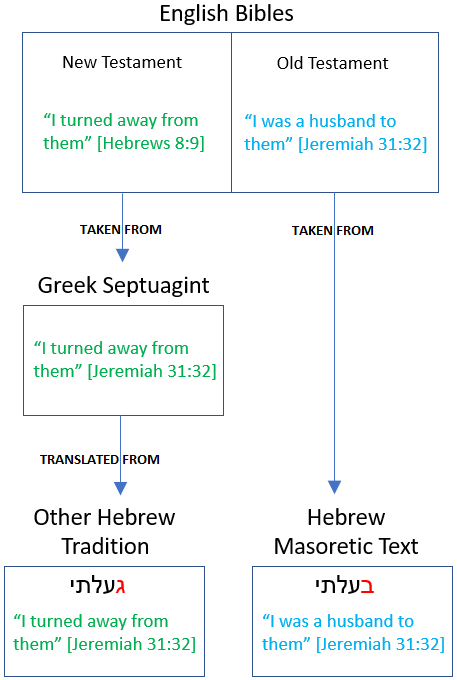
Now, you may be wondering which reading is the correct one? The word ‘ga’al’ is not only found in the Septuagint tradition, but also the Syriac tradition. The word ‘ba’al’ is not only found in the Masoretic Text but also the Aramaic Targum and Jerome’s Latin Vulgate.
Clearly, both readings are ancient and well-attested across the manuscript traditions. So, based on the manuscript evidence that survives, it is difficult to determine, with any degree of certainty, which is the correct reading.
What we do know for certain is that the Greek Septuagint reading and Masoretic Text reading cannot both be correct, one of them has to be wrong. We have a situation where either the author of the New Testament quoted a mistranslation of the Hebrew Old Testament, or the New Testament reading is correct and it is the Masoretic Text that incorrect.
Regardless of which scenario one agrees with, this is a good demonstration of just how easily words were accidentally corrupted during transmission and then went on to become standardised within the tradition in which the mistake originated.
The crowing of the rooster
In the Gospel of Mark we are told that Jesus predicts Peter will deny him three times before a rooster crows twice:“Truly I tell you,” Jesus answered, “today—yes, tonight—before the rooster crows twice you yourself will disown me three times.” [Mark 14:30]
Mark’s Gospel goes on to narrate Peter’s denial of Jesus in great detail:While Peter was below in the courtyard, one of the servant girls of the high priest came by. When she saw Peter warming himself, she looked closely at him.
“You also were with that Nazarene, Jesus,” she said.
But he denied it. “I don’t know or understand what you’re talking about,” he said, and went out into the entryway.
When the servant girl saw him there, she said again to those standing around, “This fellow is one of them.” Again he denied it.
After a little while, those standing near said to Peter, “Surely you are one of them, for you are a Galilean.”
He began to call down curses, and he swore to them, “I don’t know this man you’re talking about.”
Immediately the rooster crowed the second time. Then Peter remembered the word Jesus had spoken to him: “Before the rooster crows twice you will disown me three times.” And he broke down and wept. [Mark 14:66-72]
We have a situation where Jesus foretold that Peter will deny him three times before a rooster crows twice. Peter does indeed go on to deny Jesus three times, but only the second crow of the rooster is mentioned, the first crow is missing. Then, when Peter recalls the prophecy of Jesus, it is reiterated that the rooster would crow twice. Note that the above has been cited from the New International Version of the Bible.
The details of this story differ depending on which manuscript you refer to. Some scribes altered the prophecy of Jesus by removing the word “twice” so that the rooster would only crow once. The scribes of the codices Sinaiticus and Washingtonianus have no reference to a double crowing in 14:30, instead it says “…before the rooster crows you yourself will disown me three times”.
Codex Sinaiticus also eliminated the double crowing in 14:72 but Washingtonianus left it in 14:72. Other scribes left Jesus’ prophecy as it is and instead added an extra crow of the rooster. The scribes of codices Alexandrinus, Ephraemi Rescriptus, and Bezae included the following extra words at the end of verse 68 so it reads “…and the rooster crowed”. Just compare these different codices:

We can see that the discrepancy between the prophecy and the rooster’s crowing has greatly troubled scribes through the centuries, with different scribes making different modifications in order to try and resolve the discrepancy. This is not untypical of New Testament scribes and shows how much they were willing to play with the text.
The forgiveness of sin
In the Gospel of John, we are told that Jesus informed his disciples with regards to the forgiveness of sin:And with that he breathed on them and said, “Receive the Holy Spirit. If you forgive anyone’s sins, their sins are forgiven; if you do not forgive them, they are not forgiven.” [John 20:22-23]
The tense in which Jesus spoke these verses – whether it’s past, present or future – varies across the manuscript tradition and has some theological implications in relation to the forgiveness of sin. If Jesus spoke in the past tense, it means God forgave the sins, but in the present and future tense it implies that the action of the disciples could forgive sins.
The Catholic Church favours the present/future tense because it gives them a scriptural basis for priests playing a role in the forgiveness of the sins of others.
Whereas Protestants prefer the past tense because it makes God the final authority on whose sins are forgiven. Scribes who preferred the present tense include the Codex Vaticanus and the Majority Text of Greek manuscripts. Scribes who favoured the future tense include the Codex Sinaiticus, Latin Vulgate, and Syriac manuscripts in Palestine. Scribes who adopted the past tense include Greek minuscule manuscripts such as 124, 205, and 1346 (Gregory-Aland numbering).
You may be wondering, which tense (and therefore which understanding) is correct? The situation is actually unclear, neither the internal nor external evidence provides a conclusive answer:The MSS [manuscript] evidence points to one of three forms being original: the perfect, the present, or the future.
Much of the confusion seems to be related to variant spellings of the perfect and present. The future seems more idiosyncratic and seems unlikely. On the whole, both the present and perfect forms are well attested by external evidence, and internal evidence does not weight strongly in favour of either.
If forced to choose, the perfect seems slightly more likely the original on the basis of internal and external evidence. However, in a case such as this one, certainty is not possible and so one will be wise to avoid dogmatic conclusions based on the tense-form of this word. [6]
In conclusion, this is another good example where there are multiple variants within the surviving manuscript traditions and it is not possible to determine with any certainty which one is correct.
The creation of all things: by God or Jesus?
The King James Version of the Bible contains the following verse which identifies Jesus as God’s creative agent:And to make all men see what is the fellowship of the mystery, which from the beginning of the world hath been hid in God, who created all things by Jesus Christ. [Ephesians 3:9]
By comparison, virtually every other English version of the Bible is missing the words “by Jesus Christ”. For example, the New International Version states:And to make plain to everyone the administration of this mystery, which for ages past was kept hidden in God, who created all things. [Ephesians 3:9]
These extra words, “by Jesus Christ”, are almost certainly a very late textual addition. While these extra words are found in the majority of medieval Greek manuscripts, they are entirely absent throughout the early manuscript traditions.
This includes the very earliest copy of this verse in manuscripts like P46 which is an early second or early third century witness, fourth century codices like Sinaiticus and Vaticanus, and fifth century witnesses like Alexandrinus. The ancient translations likewise do not contain the extra words, including Latin, Coptic, and early Syriac.
Because the earliest witnesses all unanimously testify to the fact that these extra words are absent, textual scholars justifiably conclude that the shorter form is the original. This is why the majority of modern English versions do not contain the phrase “by Jesus Christ”, they are simply following the evidence.
While the correct reading is clear in this case, it’s important to note that it is the incorrect reading that was used in the King James Bible, a version that went on to become the most popular in history and one of the most printed books of all time. This goes to show just how easily a scribal change could be introduced very late into the manuscript tradition and still go on to become the most widely spread in terms of its exposure to Christians.
Thou shalt commit adultery
There is a 400-year-old version of the Bible known as the “Sinner’s Bible”. It was printed in the year 1631 which was time when people were just starting to have their own copies of the Bible at home. This version of the Bible had a major mistake in it. The Seventh Commandment was missing the word “not”, so rather than warning readers against committing adultery, it instead states “thou shalt commit adultery”:
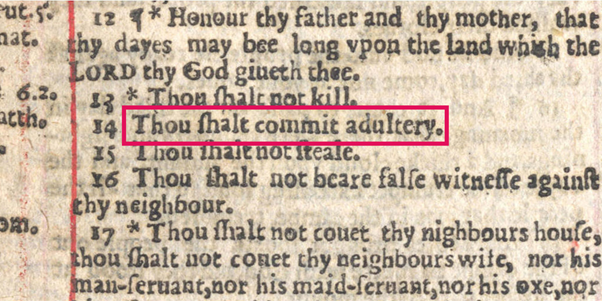
It is not known whether this was a genuine error by the publisher, or if it was an act of sabotage by a rival publisher. In any case, unlike the other examples we have covered, this mistake was not the result of a scribal change. Given this, you may be thinking, why is it then that this example is being raised in an article about scribal changes? This mistake was only discovered one whole year after 1,000 copies of this “Sinner’s Bible” came off the printing press.
So, this example serves to further illustrate just how easy it was to introduce mistakes and just how difficult it was for the Christian population at large to detect them, even when the mistakes were as glaringly obvious as “thou shalt commit adultery”. This major blunder occurred as recently as the year 1631, which is over 1,500 years after the New Testament was originally written.
We can imagine, then, how much easier it would have been to introduce, and propagate, changes into the manuscript tradition in the centuries preceding 1631. This is because the early manuscripts were transmitted not by means of printing press but rather copied manually by hand, a process that was more error-prone and more open to intentional manipulation.
With lower rates of literacy and fewer Bibles in circulation it would have been much harder to detect changes, especially those of the subtle variety, during the early periods of the New Testament’s transmission.
THE SCRIBES OF THE QUR’AN
A study of the Arabic manuscripts of the Qur’an shows that the habits of its scribes could not have been more different to that of the New Testament. As we will now see, the Muslim scribes upheld its sanctity even in scenarios where we might expect them to alter it:
The silent letters
A study of Qur’anic manuscripts shows that Muslim scribes paid great attention to detail, down to every individual letter, including those that have no impact on the Qur’an’s recitation. A perfect example of this is the bismillah. Throughout the Qur’an, one finds the phrase “bism-” (بسم in Arabic) which means “In the name of”.
It is usually followed by one of God’s names. There is a subtle distinction when it comes to the written form, depending on which of the names of God follows it. When followed by a name of God other than ‘Allah’, the “bism-” contains a silent alif. For example:
Verse 56:74:
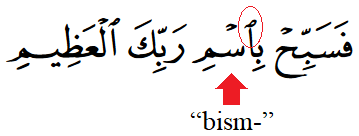
Verse 56:96:
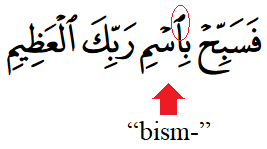
Verse 96:1:
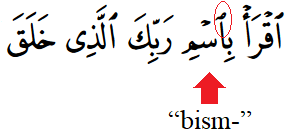
Notice in the above examples that the silent alif (marked in red) is present. This is because the verse contains a name of God other than ‘Allah’, in these cases ‘Rabb’ (meaning “Lord”). Now compare this to when “bism-” is followed by the name ‘Allah’:
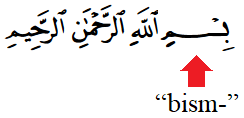
Note that the silent alif is missing in “bism-” when the verse contains the name ‘Allah’. What’s amazing is that when it comes to reciting all of these verses out aloud, they sound exactly the same. The silent alif in “bism-” is inaudible, it is not pronounced. We can see that even though this silent letter is inconsequential when it comes to recitation, no scribe was ever tempted to eliminate it or even change it to make it consistent.
Novel use of the Arabic language
The Qur’an was revealed in the language of its immediate audience, the Arabs:And indeed, We have eased the Qur’an in your tongue that they might be reminded. [44:58]
While the words and letters of the Qur’an were familiar to the pre-Islamic Arabs, for it was revealed in their own Arabic tongue, its use of language was anything but ordinary.
It is the way that the Qur’an made use of their existing language – its eloquence, style, and other linguistic features – that mesmerised its audience. One nice way of illustrating this is the seemingly random letters that some chapters of the Qur’an begin with. These letters are known as huroof al-muqatta’at, the “disjointed letters”. Here is one example:

Alif, Lam, Meem [2:1]
This would be the equivalent of starting a chapter of the Old Testament with the Hebrew letters Aleph, Lamed, Mem, or starting a chapter of the New Testament with the Greek letters Alpha, Lambda, Mu. While there are a number of different opinions among Muslim scholars as to what these mysterious letters represent, the vast majority of scholars have held that the disconnected letters do indeed have meaning and purpose.
This usage of the letters of the alphabet was not a feature of pre-Islamic works of poetry. Now if the Muslim scribes had the same attitude and mindset as that of the New Testament scribes, then they would have altered these letters, perhaps by converting them into a word or even omitting them completely.
Yet no scribe ever did anything of the sort, they upheld the sanctity of the Qur’an by faithfully preserving all the disjointed letters.
Another example of the Qur’an’s novel use of language is the way it re-purposed existing words. Take for instance the Qur’anic word ‘Fasiq’ (فاسق). Fasiq is derived from the root fisq (فسق) which linguistically means “coming forth from” or “to leave or go out of”.
The pre-Islamic Arabs were familiar with this word and used it primarily to describe anything that sprouted out from its shell, like when fresh ripe dates break forth from their skin.
The Qur’an took this word and applied it in a new context by using it to describe individuals who intentionally and constantly break the clearly prescribed boundaries of God. For example:And We have certainly revealed to you verses [which are] clear proofs, and no one would deny them except the defiantly disobedient. [2:99]
Even though the Qur’an re-purposed existing words by applying them to new contexts no scribe ever altered its use of such words, they upheld its sanctity by faithfully preserving them.
References to events and people outside of the Qur’an
The Qur’an contains numerous references to events in the life of the Prophet Muhammad (peace be upon him) and his Companions. The Qur’an does not always contain the details of such events, it sometimes just mentions them in passing. A good example is the verse about the changing of the ‘qiblah’, the direction of prayer:
And thus we have made you a just community that you will be witnesses over the people and the Messenger will be a witness over you. And We did not make the qiblah which you used to face except that We might make evident who would follow the Messenger from who would turn back on his heels. And indeed, it is difficult except for those whom God has guided. And never would God have caused you to lose your faith. Indeed God is, to the people, Kind and Merciful. [2:143]
God’s command to change the qiblah is not found within the Qur’an, but we can see that the event is still referred to in the verse above. We can easily imagine scribes expanding this verse by inserting extra words in order to provide extra detail, such as explaining what the command was or what the qiblah used to be before it changed.
Such an intention in and of itself would not necessarily be negative, it could have been done with the good intention of making things easier to understand for the reader.
But no Muslim scribe ever did change it, they consistently upheld sanctity of the Qur’an. Another good example are the verses about Islam’s staunchest enemy:Have you seen the one who forbids a servant when he prays? Have you seen if he is upon guidance or enjoins righteousness? Have you seen if he denies and turns away? Does he not know that God sees? No! If he does not desist, We will surely drag him by the forelock. A lying, sinning forelock. [96:9-16]
The mention of the servant being forbidden from praying is a reference to Prophet Muhammad and the mention of “denying and turning away” and “lying and sinning” are references to an individual by the name of Abu Jahl who was Islam’s chief enemy.
Abu Jahl did his best to obstruct the spread of Islam and used to even physically harm the Prophet Muhammad during his prayers. We can easily imagine scribes expanding this verse by inserting the name of Abu Jahl but none ever did, again they consistently upheld the sanctity of scripture.
The earliest scribes of the Qur’an
This section in particular will highlight another major difference between the New Testament and Qur’anic manuscripts. With the New Testament, we have little to no idea about the identity of the earliest scribes. Most of them left no record of themselves, apart from the manuscripts they copied.
Basic personal information such as a scribe’s name is almost entirely absent in the early manuscripts. It is only much later in history that Christian scribes started recording their names and other personal information as a standard practice.
By comparison, we know intimate details about the very earliest Muslim scribes. We know not only their names and other personal information, but also the methodology they adopted when they went about the task of standardising the Qur’an’s orthography. The diligence and care with which the earliest Muslim scribes went about this task is illustrated beautifully in the following incident:Az-Zuhri said:
“They differed then with At-Tabut and At-Tabuh. The Quraish said: ‘At-Tabut’ while Zaid said: ‘At-Tabuh’. Their disagreement was brought to Uthman, so he said: ‘Write it as At-Tabut, for it was revealed in the tongue of the Quraish’” [7]
Zaid was both a scribe and a Companion of Prophet Muhammad and was part of a committee tasked with standardising the Qur’an’s orthography. Here we are told that there was a single letter over which Zaid bin Thabit differed in terms of its spelling. The disagreement was over whether a specific word should end with the Arabic letter ت or a ه. The word in question occurs only two times in total in the entire Qur’an, verses 2:248 and 20:39.
Zaid favoured the spelling “Tabuh” whereas others favoured “Tabut”. They took this question to the leader of the Muslims and head of the scribal committee, Uthman bin Affan, who told them to write the word in the dialect of Quraishi Arabic (“Tabut”). It is such a minor detail, the difference comes down to a single letter that does not even change the meaning of the word, and yet the scribes showed the greatest of concern over it.
Conclusion
In this article we’ve seen that the odds of the New Testament being preserved through the written manuscript tradition vastly outweighed that of the Qur’an. Thanks to the wide availability of books and libraries in the Graeco-Roman world, higher rates of literacy among Christians, and the highly-developed orthography that the Greek language offered, it was the Christian scribes who were much better-placed to accurately transmit their scriptures.
Yet we have seen, against all odds, that it is the Qur’an that has been better preserved through the written manuscript tradition. Whenever the scribes of the New Testament did not understand something or disagreed with it, they had no qualms with making changes or leaving things out. Whereas with the Qur’an, for the things that we would expect to have been changed, they did not.
Why are the Qur’anic manuscripts so much purer than that of the New Testament? We’ve seen that the difference is staggering, so how do we account for this phenomenon? The Qur’an has a unique quality that no scripture of any other religion has, that of mass memorisation.
Throughout history, from the time of Prophet Muhammad (peace be upon him) to the present day, the Qur’an has been primarily transmitted orally and preserved by means of mass memorisation through successive generations . In the Islamic tradition, the written record of the Qur’an has always been a secondary means of preservation. It is the hearts and minds, not ink, that has served as the primary vessel for its transmission.
Now, Muslims do not believe or claim that every manuscript of the Qur’an that has ever been produced is exactly as was revealed by God. We acknowledge and accept that scribes make mistakes, this is to be expected when it comes to copying manuscripts by hand. However, the Qur’an’s mass memorisation has served as a practical means by which its purity has been preserved.
Written manuscripts are always compared against the memorised Qur’an, and any divergence in the written form – accidental or otherwise – is thus easily identified, quickly eliminated, and prevented from proliferating among the masses. Millions of memorisers of the Qur’an know its content intimately, so it has not been possible for any scribal corruptions to take hold.
Whereas with the New Testament, the written manuscripts are the only means of transmission and consequently it has possessed no checks and balances, no protective mechanism, to guard it against corruption. Hence, numerous changes – and we have examined many in this article – have been easily introduced, were difficult to detect, and commonly ending up spreading far and wide, being taken as ‘gospel’ truth among the Christian masses through the centuries.
It is quite amazing that the Qur’an’s secondary means of transmission is far more reliable, and accurate, than the New Testament’s primary, and only, means of transmission!Indeed, it is We [God] who sent down the Qur’an and indeed, We will be its guardian. [Qur’an, 15:9]
Credit: Many prophets One message
REFERENCES
1 – Charles F. Horne, The Hanged Poems.
2- William V. Harris, Ancient Literacy.
3 – M. Azami, Studies in Early Hadith Literature, p. 1.
4 – Geoffrey Horrocks, Greek – A History of the Language and its Speakers, p. xiix.
5 – 4 – William W. Goodwin, A Greek Grammar, p. 26.
6 – Dr. Noah W. Kelley, The Role of the Church in Forgiving Sins in John 20:23.
7 – Tirmidhi, Book #47, Hadith #3387.